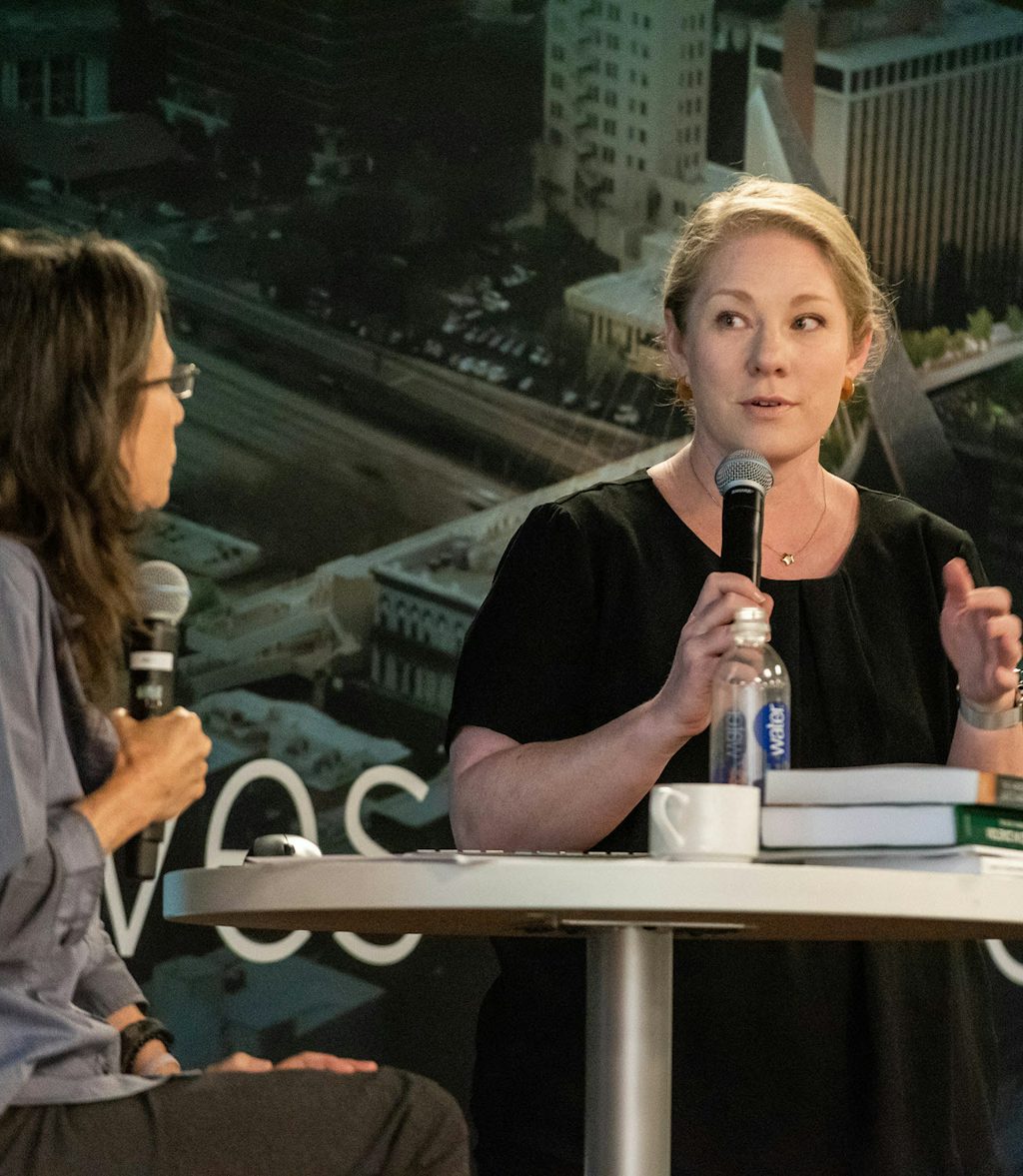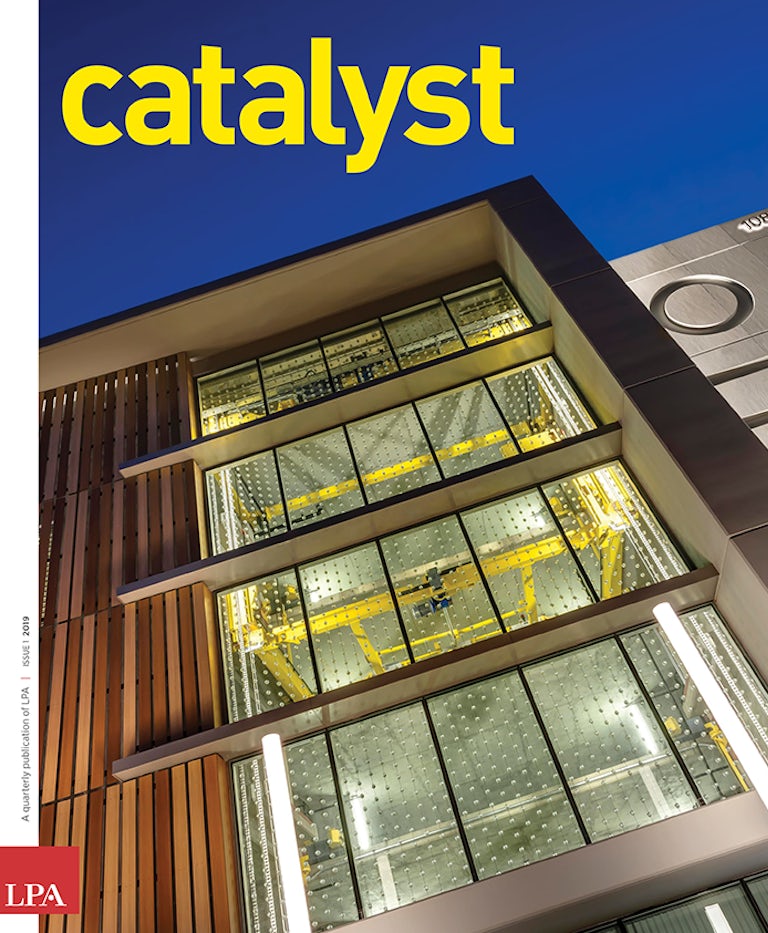School leaders are wrestling with ways to make their schools safer, knowing there is no absolute right answer. No one solution will keep all children safe; no single strategy will solve all the problems.
Designers are confronting the same issues. Decisions made in the design process can have a profound impact on safety, as well as the effectiveness of learning environments. In a complex world, how can architects and designers help schools create environments that balance safety and the goal of developing better learners? How can research help administrators separate the effective from the harmful?
A few weeks ago, LPA convened an internal town hall-style forum for the firm, including members of the different studios and disciplines — architects, interior designers, landscape architects, engineers — for a focused discussion on the available research and the best ways to help school leaders develop secure schools. It was intended as an open conversation, a form of Masters Class, examining strategies that can help clients measure and evaluate the best options for their school.
“We don’t want to advocate for any specific solutions,” says James Kisel, LPA director of school planning. “That’s not our role. We want to learn how to better facilitate the conversations to achieve the best answers for each community.”
The LPA session was moderated by Dr. Julie Zoellin Cramer, a learning experience strategist who works with LPA to connect research with clients’ goals. The dialogue was lively, with designers discussing the impact of different measures and how they affect the pedagogy and fundamental strategy of the school, as well as security.
“We are learning from each other,” said LPA Associate Principal Kate Mraw, who organized the session. “We want to use this dialogue and take that out to our projects in real time, so that we can have relevant conversations that are more informed.”
A Research-Driven Approach to School Safety
LPA designers gather for a frank discussion on how to help administrators create safer schools.

An Industry Issue
In August, the American Institute of Architects (AIA) announced a series of initiatives to study the specific links between school design and school safety. “Architects have a role to play in addressing school violence,” said 2018 AIA President Carl Elefante in a statement. “The power of design can improve school safety now.”
However, it’s not easy to separate the design discussion from the emotionally-charged debate around the tragedies that have impacted schools around the country. Data shows that the odds of a rampage shooting on a school campus are less than 1 in 10 million, but that is irrelevant to parents and schools charged with protecting children.
The real question: “what’s the cure?” Dr. Cramer asked the designers during her LPA presentation. Research indicates strong connections between safer schools and the larger interests of developing better students. “It’s around relationships,” Dr. Cramer said. “There are ways to put forth relational responses, not just physical facility or technical protocol responses.”
In reality, not all physical measures work. Every situation is different. Metal detectors, cameras, fencing, and other security elements may not be effective and could have detrimental consequences, Dr. Cramer said. The safety discussion should move beyond the purely physical to include the psychological, creating environments that actually reduce risk, while developing better student outcomes she told the designers.
“Many of physical security measures being put in place negatively impact the school environment,” Dr. Cramer said. Obtrusive security elements can alienate students and interfere with their relationships without actually making the school safer. “There’s real safety and then perceived safety,” she said.
Ultimately, “the strongest security measure is making students feel like they belong at school,” Dr. Cramer told the designers. Absenteeism increases, extracurricular activity decreases and student-teacher relationships deteriorate if students don’t feel safe, studies show. The question facing educators: “What is the identity that you want students to have in this environment?” she said.
Designers in the audience were broken into groups and asked to share their experiences and reactions to the data. How should students feel on campus? As teams, they were asked to draw environments that they felt were safe for kids. What components should be included? What elements were really important to making the learning environments safer?
Myths and Facts
Several studies have addressed the design of schools in the wake of attacks, if not dispelling, at least questioning, many of the knee-jerk beliefs about security. Open and transparent designs are not necessarily in conflict with secure environments, Dr. Cramer said. “Research doesn’t show that closed environments are more secure,” she said. “What is going to make a school more secure is knowing the student better.”
Diving deeper finds many nuances not often considered in discussions. Law enforcement can be brought into the process early, one designer noted. Clear sight lines and wide visibility down hallways can make it easier to spot the start of an incident, police officials say. Response times are critical during an attack, Dr. Cramer noted.
During the discussions, designers from different sectors and offices asked questions and shared experiences. Are there fencing alternatives? Is it better to have cameras in selected locations or visible everywhere?
Designers shared their own experiences, dealing with the issues in different situations. One designer discussed a school that initially wanted bulletproof glass throughout the campus, but instead the issue was addressed by frosted glazing on windows and a landscape berm facing a busy road. For one recent school, transparency played a large role in the design, but it also included sliding marker boards that gave teachers the option of controlling views into the classroom, said Mark Oppelt, principal in the San Antonio office.
Any discussions should focus on the nuances and culture of the individual community, Dr. Cramer said. A student’s outside-of-school experience can play a large role in how students react to inside-of-school security measures. Community relationships, perceptions of law enforcement and an understanding of home environment stress levels all play a role in addressing the best strategies for a specific school to find the best ways to make their school safer, she said.



Obtrusive to Unobtrusive
To help the evaluation process, Dr. Cramer put security measures on a spectrum of obtrusive to unobtrusive, reflecting their potential impact on students. Bullet-resistant windows and key security systems are unobtrusive; drug testing, security guards and surveillance are more obtrusive. The spectrum doesn’t evaluate the effectiveness of the measure, only the potential impact on the culture and learning environment of the school.
The idea struck a chord with many designers. “There are a lot of rich design solutions that make active security elements unobtrusive,” Oppelt said. “That’s where we as designers can add value.”
As the session wound down, the focus turned to the takeaways. The ideas that would help designers in the field add value to the conversations with clients. “We need to be having that conversation from day one, right when we’re programming the school,” said LPA CEO Wendy Rogers. “It keeps the project on track because you’ve already addressed the issues.”
Working with research changes the discussion, one designer noted. “What will be interesting coming out of today’s discussion is to have the research to back up the things that we talk about,” said project designer Lindsay Hayward. “It’s what we need to have a better conversation.”
Ultimately the goal is to develop a process that can help inform and create a more inclusive, comprehensive dialogue, Mraw said. Designers need to provide better resources to help administrators better evaluate the options, she said.
“This is such an interesting and dynamic conversation that we need to have,” Mraw said after the session. “Every client is unique, every region is different, and we really want to focus on what’s at stake so we can all understand how deep the conversation needs to go.”
This story originally appeared in Catalyst Issue 1 2019. Subscribe today to receive Catalyst, a quarterly publication that takes a deep dive into design ideas, industry leaders and initiatives.















